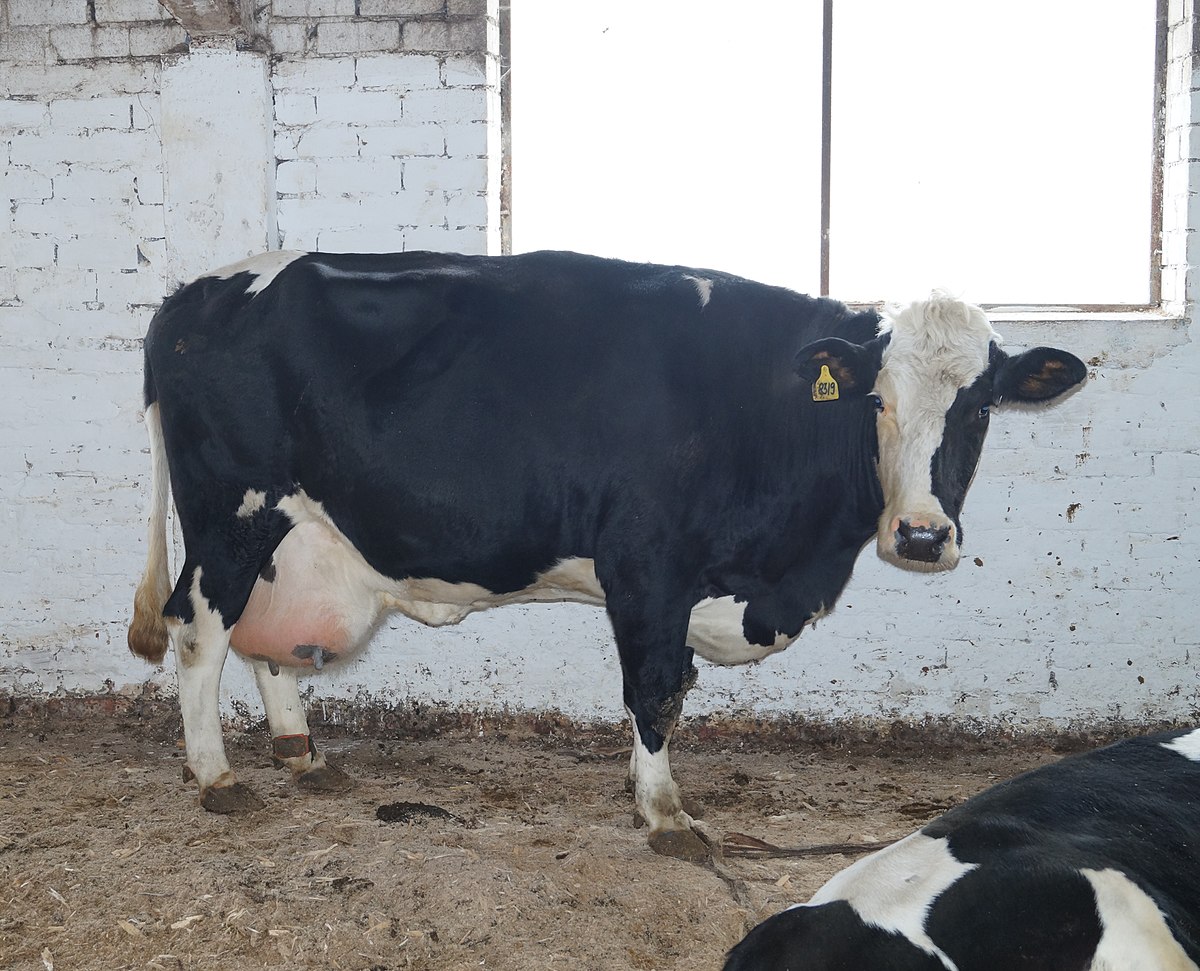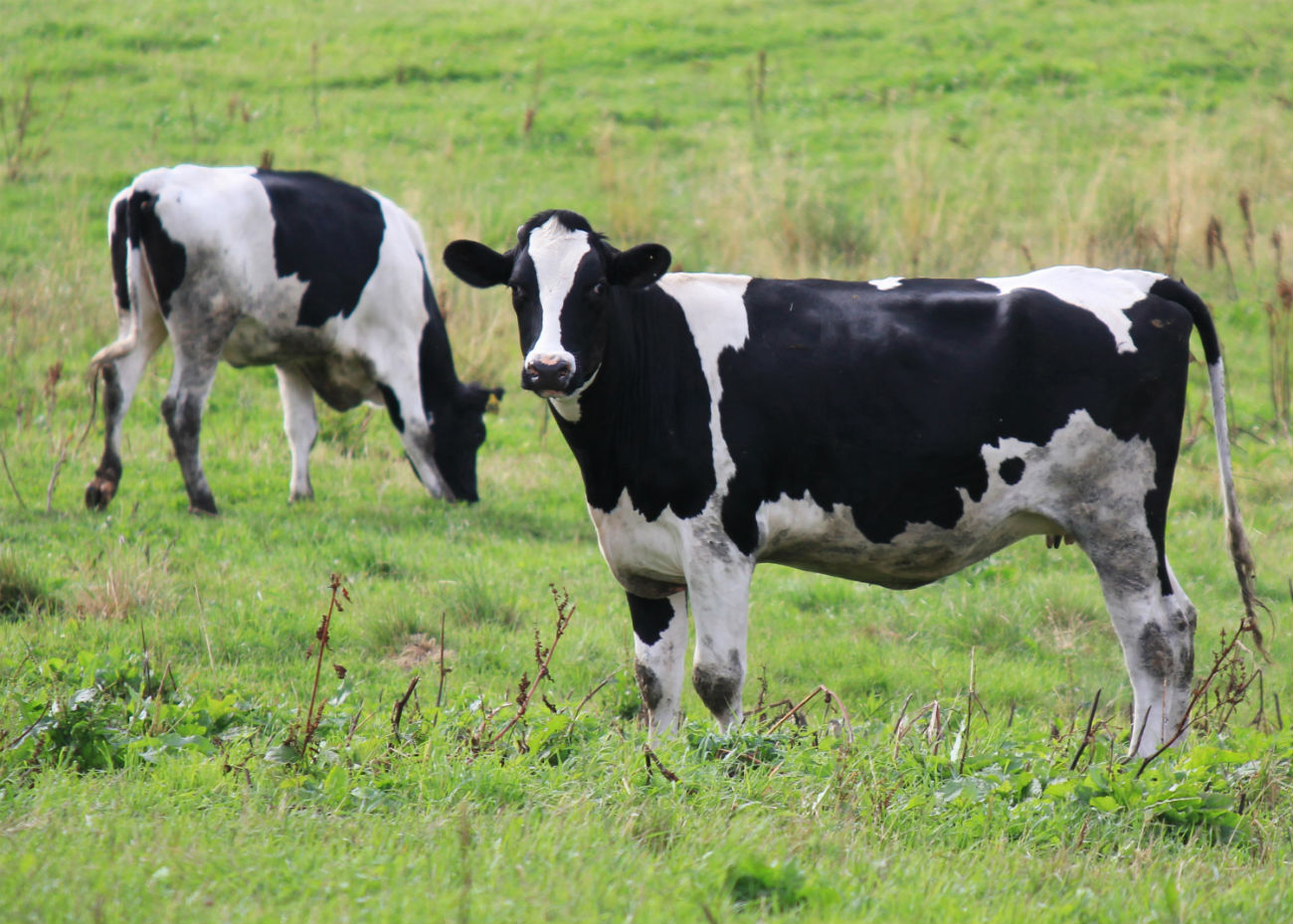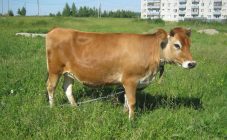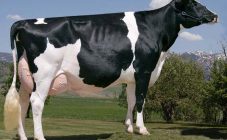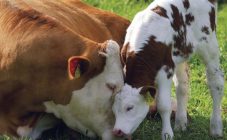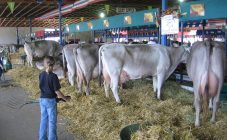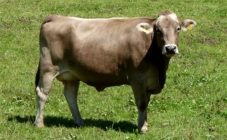Content:
Dairy cattle breeds are in great demand in domestic farms. One of the representatives of this trend is a relatively new breed of cows - black and white. The breed was bred by breeders in the Soviet Union in 1930-1940. Today it occupies an honorable third place in the ranking of dairy breeds.
Black-and-white breed of cows: characteristics
Farmers in many countries of the world are engaged in breeding black-and-white cows. Their progenitors are the Dutch and Ostfrian breeds, which began to be crossed in the 18th century in the Netherlands. The bred breed had the characteristics inherent in dairy cattle: underdeveloped muscles, high milk yield. The breeding transformation of the breed took place in the last century in the USSR. Then the value and productivity of meat were increased, immunity was increased.
Today in Holland, work is continuously being carried out to improve the beef and dairy productivity of cows of this breed in equal amounts. For this, strong and developed animals are selected. It is necessary that they have an impeccable physique, developed udders and strong bones.
Description of the breed
Among the representatives of this breed, there are different groups of black-and-white bulls and cows. This is due to differences in the methods of selection work, pedigree breeding, as well as in the conditions of keeping livestock.
Based on the territorial origin, differentiation of cattle is carried out:
- Cows from the central region of the Russian Federation. They appeared as a result of crossing the black-and-white breed with local ones (Kholmogory, Yaroslavl). The weight of such a bull is capable of reaching 1 ton. Cows, as a rule, are two times less, their weight varies from 500 to 650 kg. The average annual productivity of milk production is 4000-6000 kg. The fat content of the product, depending on the feeding method, varies within 3.6-3.7%.
- Motley cows of the Urals. The spotted cow appeared as a result of crossing the Tagil breed with the Baltic black-and-white. The body constitution is lightweight and rather dry. For a year, the owner manages to collect from 3.5 tons to 5.5 tons of milk according to the standard. Fat content varies between 3.8-4%.
- Cows of Siberia. This species appeared as a result of crossing local breeds with Dutch ones. By their constitution, animals are very small, therefore, the milk flow rates are somewhat lower. Subject to all the rules of care and the provision of high-quality nutrition, the maximum milk yield can be 5 tons. Milk fat content - no more than 3.9%.
Characteristics and features of the breed
The appearance of the animal has the following characteristic features:
- strong short legs;
- elongated and proportional torso;
- not very wide chest;
- the skin is elastic, thin;
- the head is elongated, oblong, the face is elongated;
- the proximity of the posterior nipples is noted;
- the horns are light gray, at the ends they may be somewhat darker;
- the udder is bowl-shaped, the size is large and asymmetrical;
- the withers are even.
As for the physical parameters of the representatives of this breed, they are as follows:
- at the withers, the average height is 1.3 m;
- slaughter meat yield more than 50%;
- the diagonal of the torso varies from 158 to 165 cm;
- the fat content of milk, subject to all the rules of maintenance, can reach 4.2%;
- the average weight of a bull is 1 ton, a cow is two times less;
- protein concentration in meat - 3.4%;
- the depth of the chest is approximately 75 cm.
Calves are born small, their weight is 35-40 kg. With standard feeding, the average daily weight gain is 0.6-0.8 kg. If the feeding is intensive, and the physical activity of the animal is minimized, the increase will be 0.8-1 kg. At a year and a half, the weight of the bull is 420-460 kg.
Breeding and general care rules
Keeping cattle includes a whole range of necessary measures: regular examination of the animal by a veterinarian, quality nutrition, milking, procurement of raw materials, cleaning of the premises in which the cows live. A significant drawback of animals is that they are very demanding on the conditions of detention.
The room where animals live should be spacious, warm and dry, with a minimum area of 20 m². Doors and windows at the barn should face east and south.
In winter, good lighting and good ventilation should be provided. The optimal temperature regime is + 5-12 degrees. It is very important to clean the room well. Proper barn setup includes:
- The presence of feeders. The volume of each should be such that it can hold a portion of hay.
- A container with water. It should always be full, the water should always be clean, so it is recommended to change it every other day.
To prevent the development of diseases, the animal should regularly brush its coat using a brush, wash the udder, trim the hooves. In summer, it is recommended to regularly carry out water treatments.
Nutrition
All cows have different feed needs. They depend on the size of the animal, the amount of milk yield, and the conditions of detention. Most of the diet should be good quality hay. For every 100 kg of animal weight, there should be at least 3.5 kg of hay. To increase milk yield, the diet should be enriched with sleepy foods, for example: potatoes, corn silage, turnips, fodder watermelon.
Animals should be given water at least 2-3 times a day.
Breed advantages and disadvantages
The black-and-white breed is one of the best representatives of dairy cow breeds, which allows farmers to make good profits from the sale of high-quality dairy products. In addition, animals have the following advantages:
- high quality obtained from animal products: lean milk and moderately fatty tender meat;
- cows are hardy, have strong immunity, rarely get sick;
- moderate early maturity in combination with the ability to quickly gain muscle mass, eating a minimum amount of feed.
- excellent adaptive properties, animals quickly acclimate to a new place.
Unfortunately, the breed also has disadvantages. Breeders are actively working to eliminate negative qualities, such as:
- clear characteristic differences between the groups of this breed;
- low protein concentration in dairy products, as well as its fat content;
- in animals the skeleton is underdeveloped, they are not very large;
- increased requirements for the maintenance of the animal.
On the territory of Russia, the black-and-white breed of cows is very common. This cattle has many advantages over other members of its species. To breed these animals and profit from this, you must follow all the rules for their maintenance.
